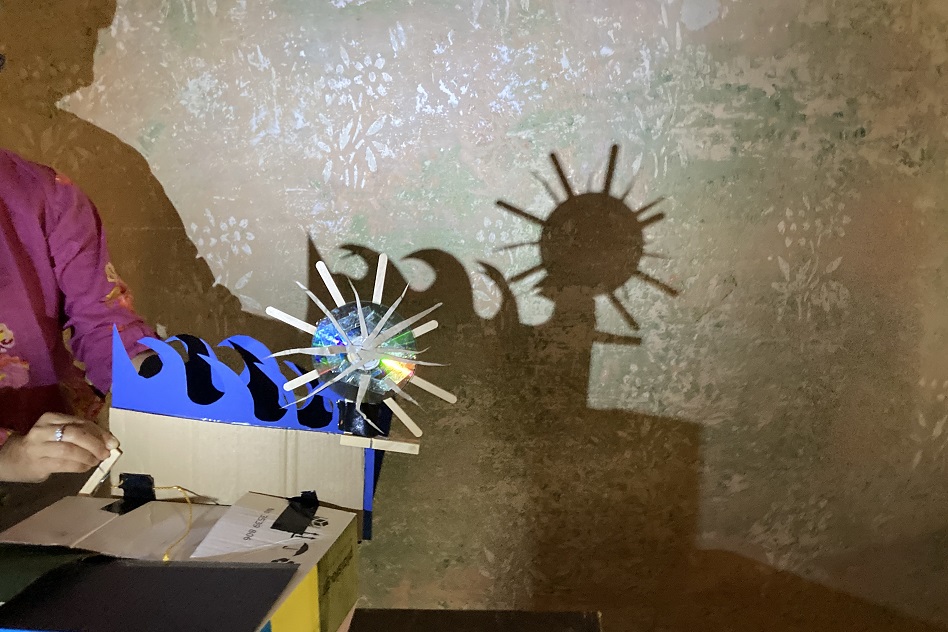Can we create interesting shadow art using materials from a recycling bin or items collected during a beach clean-up? Apparently yes, according to our TINK@School team that, during their meeting in Milano (June 2023) worked in pairs to create engaging works in just 40 minutes.
Some insights from this session, that was facilitated by Iro Alampei (MIO-ECSDE):
Space: Two stations were placed with a. materials and b. tools in two large comfortable rooms, where we could all move back and forth. Some pairs chose to work with the confined space of a box as their frame, others chose to project on the wall, not everyone used a table. Interestingly, apart from the materials handed to them, pairs used also other prompts from around the room, e.g. the glasses, wooden-plates and sticks from the served coffee, etc.).
In the following photo one of the two stations is depicted
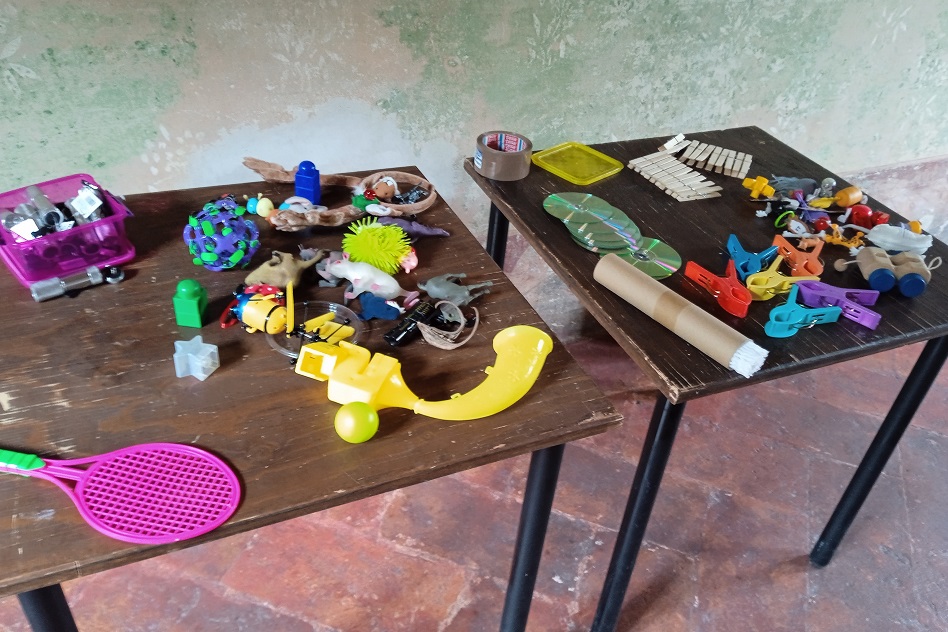
Materials: Having a variety of interesting materials (transparent, opaque, net-like) is necessary. All groups said that the materials “guided” the creation (or even one item that ‘had to be there’ and they used it as primary to build the rest of the composition). No one started with a topic in mind. They spent some time above the materials’ table. In this prototyping we didn’t use beach-clean up trash, but mainly clean items from the recycling bin, as well as broken toys and animals. In real life application we are prompted to do the activity after a clean-up, and include trash but also natural materials, like branches, feathers and leaves.
The pair in the following photo chose the CD as their central item, and then built their entire creation around it.
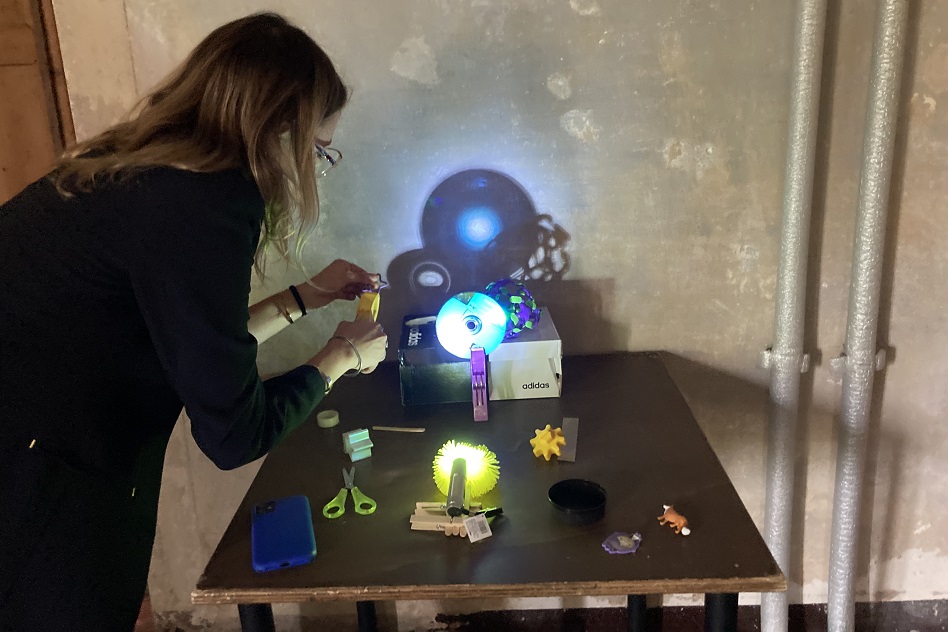
Topics addressed: The pairs were free to choose their topic and give their work a title. One group focused on Plastic Pollution, while the rest attempted to create atmospheric, feel-good shadow-works (Indicative titles: the mystery of the universe; the silver moon; the sea and sun of my dream vacation). During the debrief, they explained that their approaches related to quality of life, and in this sense, they were connected to their personal values of sustainability.
In the photo below, the pair started building their creation from the Net and the entaggled animals. Shadow art title “Save us from trash”.
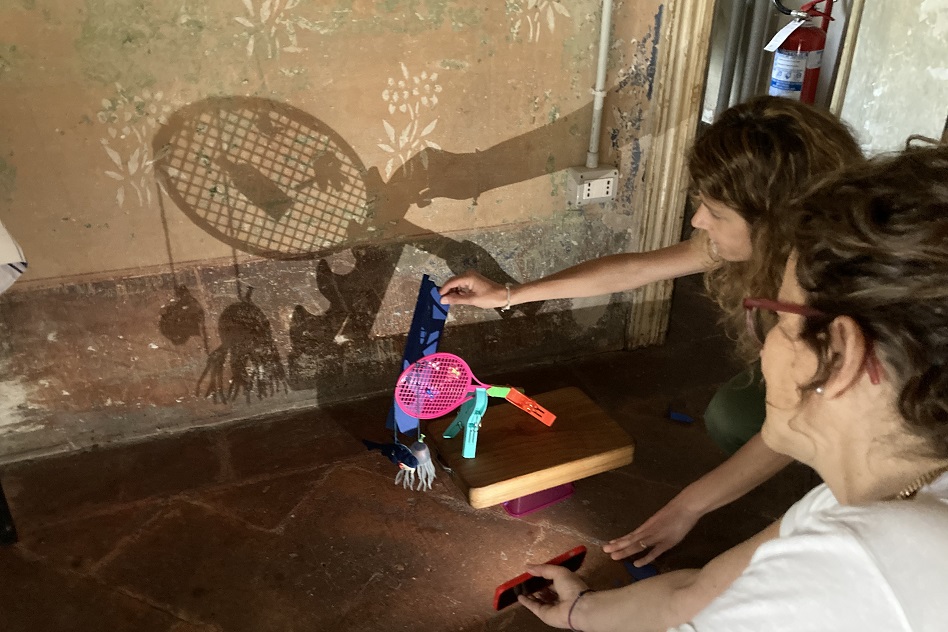
Duration: For most pairs, 40 min was enough to reach their desired outcome. One pair chose to add movement to their work, and asked for another 30 min (at least!) to complete it. In real-life facilitation participants should be given this time if they need it.
Frustration: One group did not reach a ‘final’ shadow piece, because they chose to add movement, and this added complexity to their creation. They were frustrated, but didn’t regret their choice. They admitted they would need more time, but seemed satisfied with the level they had reached, and showed us their progress and how the wanted to explore movement.
TIP: “Being OK even if we don’t make it“ is a great example of the learning that can happen during Tinkering. In this case the process of making and justification was felt also valuable. In real-life, when working with students, it might be harder for “frustrated” students to reach this stage of contempt, but if they do, it can be a great tinkering experience : ) Certainly, the facilitator can play a role in achieving this this during facilitation and in the after talk.
In the following photo the pair that didn’t complete the work. Frusrated but happy : ))
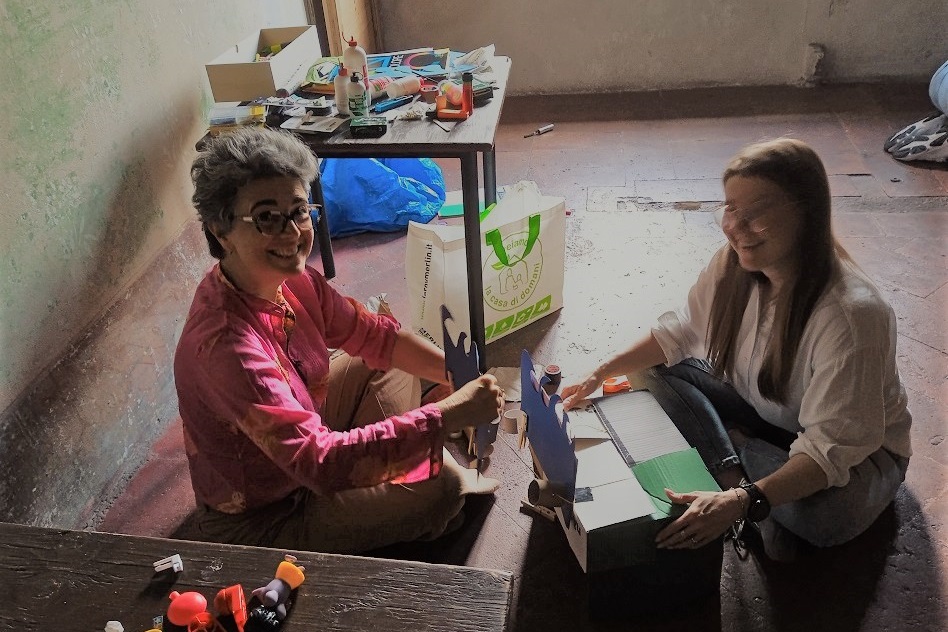
Layers of goals: There were various “roads taken” in arriving to the works that were presented, a group chose to add movement, another chose to add music to make their work feel more personal and meaningful. These goals and decisions came from them.
The ‘other’: Before starting, participants were given the choice to work solo or in pairs from different organizations. They all chose to work in pairs (assigned by the facilitator). In the debrief they all stated their collaboration was excellent. It seems that by now the TINK@School team has reached a high level of trust and comfort in expressing freely and feeling heard. In real life application, attention should be given by the facilitator to how choices are made within a pair (power dynamics, balance, and possible frictions).
The following work was entitled Silver Moon.
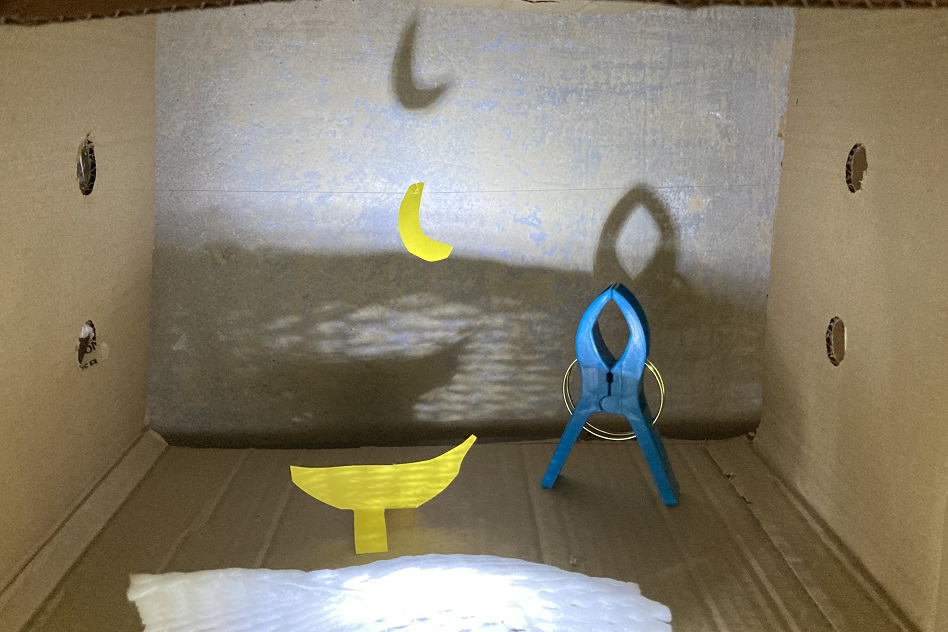
Step-in and step-out: These phases are both essential: the first introductory phase orients the participants and supports them with clear examples (images or videos), especially if they haven’t tried something similar before. The debriefing session is important in order to collect impressions, A-ha moments, but also challenges and ideas for improvement. In real life application the notion of dismantling (not destroying) and re-using the materials needs to be stressed to the participants. Besides being tentative to our activity resources, this offers the opportunity to talk about lifecycle of objects, circular economy and upcycling.

